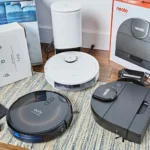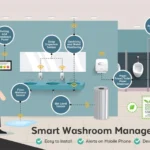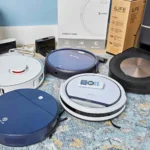As technology evolves, so do our household chores. Smart vacuum cleaners have made cleaning floors more efficient and convenient for many of us. However, with great power comes great responsibility. Understanding how your smart vacuum cleaner charges is crucial to maximizing its usage and lifespan. This article will take you through the charging cycle of your smart vacuum cleaner step-by-step and provide you with safety guidelines to ensure that you make the most out of your device without compromising on safety. So, let’s dive in and discover everything you need to know about the charging cycle of your smart vacuum cleaner!
How Smart Vacuum Cleaner Charges
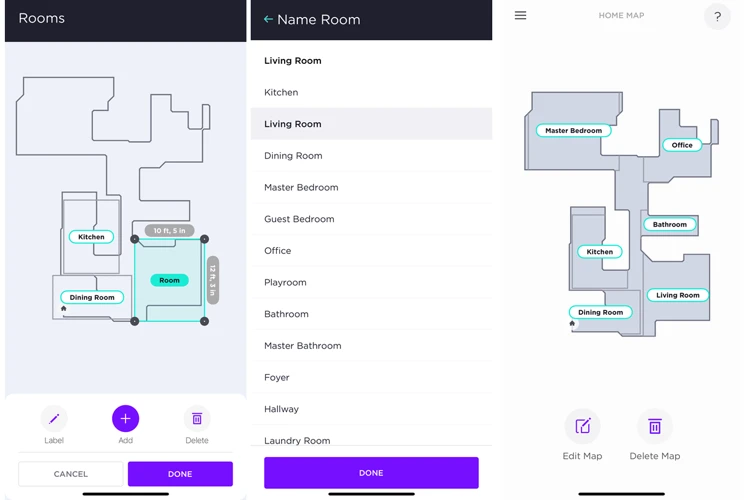
As convenient as smart vacuum cleaners are, their charging process might still leave some users puzzled. The charging cycle of a smart vacuum cleaner is an essential process that enables it to perform optimally. Understanding how a smart vacuum cleaner charges is crucial knowledge for any user. In this section, we will explore the different aspects of how smart vacuum cleaners charge, from the process of charging to the time it takes to charge and more. We will also look at some factors that may affect the charging process, such as temperature and charger issues. So, let’s dive in and explore this perplexing process of smart vacuum charging together. For more information on smart vacuum charging problems, check out smart vacuum not charging or smart vacuum charging issues.
Process of Charging
The charging process of a smart vacuum cleaner is an essential aspect that needs to be understood to maintain and increase battery life. It is essential to pay attention to the process, charging time, charging indication, and factors affecting charging time.
Here is an outline of the steps followed in the process of charging a smart vacuum cleaner:
Step 1: Connecting Smart Vacuum Cleaner to Charger
Connect the charger to the smart vacuum cleaner’s charging port using the provided charging cable. Once connected, a light on the vacuum cleaner or the charging cable should indicate a power source.
Step 2: Smart Vacuum Cleaner Battery Diagnosis
Before charging begins, the smart vacuum cleaner will run a quick battery diagnosis to check for any defects, like a bulging battery, before initiating the charging cycle.
Step 3: Battery Replenishment
After the diagnosis, the smart vacuum cleaner replenishes the battery through the charging port. It is at this stage that the charging time will depend on several factors like the level of battery depletion or room temperature.
Step 4: Battery Full Indication
Once the battery is fully charged, the smart vacuum cleaner should indicate that the battery is full. Depending on the make and model of the vacuum cleaner, it can either stop charging automatically or continue trickle charging to maintain the battery’s performance.
It is important to note that charging habits can impact the life and performance of your smart vacuum cleaner’s battery. Be sure to follow the charging instructions in the manual and implement the following charging tips to ensure maximum battery life:
- Keep the charging area ventilated: Ensure the charging area is properly ventilated, and avoid charging the vacuum cleaner on soft surfaces like carpets or fabrics, which can block the air intake and cause overheating.
- Regularly Clean the Charging Port: Dirt and debris can build up in the charging port, affecting the charging process, so make sure you periodically clean it with a dry cloth or brush.
- Maintain Proper Room Temperature: The temperature of the room in which your smart vacuum cleaner charges can impact the charging time and overall battery life, so try to maintain a room temperature of 10°C to 35°C as recommended.
- Only use Authorized Chargers: Always use the charger that came with your smart vacuum cleaner since using a defective or unauthorized charger can cause battery issues and other problems. If you suspect your charger is defective, check out our article on /defective-charger-vs-smart-vacuum-issue/.
- Follow Safety Measures: Follow the safety measures recommended by the manufacturer to avoid any potential hazards of charging your smart vacuum cleaner. Learn more about these measures from our article on /safety-measures-charging-smart-vacuum/.
- Maintain good battery health: Follow proper battery maintenance tips to maximize the battery life of your smart vacuum cleaner. Learn more about battery maintenance tips in our article on /smart-vacuum-battery-life-tips/.
Understanding the charging process of your smart vacuum cleaner is essential to ensure its proper functioning and maintenance of the battery life. Paying attention to charging times and factors affecting it, using authorized chargers, maintaining good battery health, and following safety precautions can significantly improve the life and performance of your vacuum cleaner’s battery.
Charging Time
One of the most crucial aspects of understanding the charging cycle of smart vacuum cleaners is the charging time. It refers to the time required for the battery to charge fully from zero to a hundred per cent. In most cases, the charging time of smart vacuums varies depending on several factors, including the model, the type of battery, battery size, and the amount of charge remaining in the battery.
Here are some essential details about the charging time of smart vacuum cleaners in bullet points:
- On average, it takes between 2-4 hours for most smart vacuums to charge fully.
- Some high-end models may take less time to charge due to advanced charging technology.
- The charging time for manual and auto charging may vary.
- The charging time may be affected by the battery’s size and technological features of the cleaning robot.
It’s vital to note that very high or low room temperatures may affect the charging time of your device. It’s crucial to check the charging time and temperature specifications provided in the manual.
Charging time is an important factor that can significantly affect the usability and performance of your smart vacuum cleaner. By following the charging safety guidelines and battery maintenance tips, you can help ensure that your smart vacuum maintains optimal performance and charging efficiency.
Charging Indication
Smart vacuum cleaners have a range of charging indicators that communicate the current level of battery capacity and the status of the charging cycle. Here are some of the different charging indications that you may find:
- Blinking Lights – Some smart vacuum cleaners have blinking lights as an indication that the device is charging. Typically, the lights will blink slowly to indicate charging and turn solid when the charging cycle is complete.
- LED Display – LED displays on smart vacuum cleaners indicate the charging status, battery capacity and other important information. These displays are typically easy to read and provide a clear indication of when the vacuum cleaner is fully charged.
- Mobile App Notification – Some smart vacuum cleaners have an accompanying mobile app that allows you to monitor the charging status of the device. This is especially useful if you’ve stepped out of the house and want to check whether the vacuum cleaner has completed charging. Notifications are sent to your mobile device when the charging cycle is complete or if there are any issues with the charging process.
It’s important to pay attention to the charging indicators provided by your smart vacuum cleaner. Not only do they ensure that your device is functioning correctly, but they also help to prevent overcharging which can damage the battery. Always refer to the user manual for specific instructions on interpreting the charging indications for your particular model of smart vacuum cleaner.
Factors Affecting Charging Time
The charging time of a smart vacuum cleaner depends on various factors, including the charging capacity of the device, the type of battery present, and external factors that can affect the charging process. Let’s look at these factors in more detail in the table below.
| Factors Affecting Charging Time | Description |
|---|---|
| Charging Capacity | The charging capacity of the device plays a crucial role in determining its charging time. The higher the capacity, the longer it takes to charge completely. Most smart vacuums have a charging capacity of 240V and take an average of 2-3 hours to charge fully. |
| Battery Type | The type of battery present in the smart vacuum cleaner plays a crucial role in determining the charging time. Li-ion batteries generally take less time to charge than lead-acid batteries. On average, Li-ion batteries take about 2-3 hours to charge fully, while lead-acid batteries may take as much as 6-8 hours. |
| Temperature | The temperature of the room in which the vacuum cleaner is being charged can affect the charging time. Charging a smart vacuum in a cool environment can slow down the charging process, while charging in a warm environment can speed it up. |
| Power Supply | The power supply of the charging unit can also affect the charging time of the smart vacuum cleaner. A lower voltage power supply will take longer to charge the device than a higher voltage power supply. |
| Battery Condition | The condition of the smart vacuum cleaner’s battery is also crucial. If the battery is old or damaged, it may take longer to charge fully. |
It is important to note that each smart vacuum cleaner may have different charging specifications and requirements, and users should always refer to the manufacturer’s instructions for the best charging practices. By understanding these factors that can affect the charging time of a smart vacuum cleaner, users can optimize their charging process for maximum efficiency and longevity of their devices.
Types of Charging of Smart Vacuum Cleaners
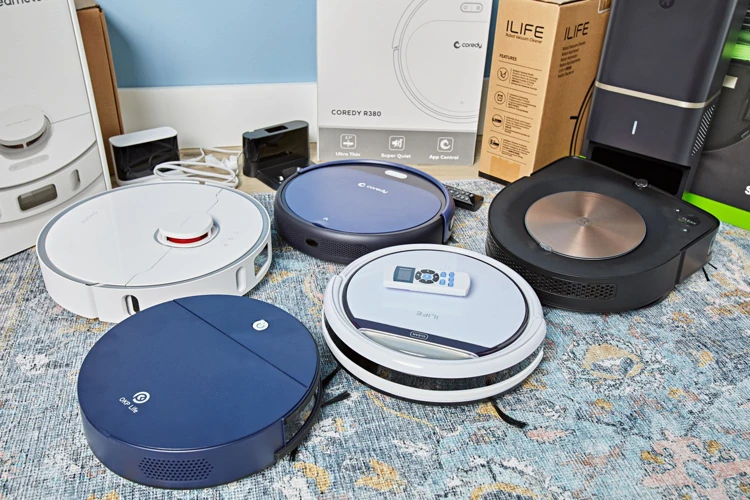
When it comes to charging smart vacuum cleaners, there are different ways in which this can be achieved. The method of charging would typically depend on the type of vacuum cleaner being used. It’s important to understand the different charging options available, as this can impact the overall performance of the vacuum cleaner. Here, we will explore some of the various charging methods commonly used by smart vacuum cleaners.
Manual Charging
Manual charging is a form of charging where the user has to physically connect the smart vacuum cleaner to the power source to charge it. This method of charging is often used when the battery level is critically low and the smart vacuum cleaner has to be used immediately.
Pros of Manual Charging:
- Quick charge: The manual charging method charges the vacuum cleaner in a shorter period of time than the auto charging method.
- Efficient: It does not waste energy and ensures that the battery is fully charged before the next use.
- Cost-Saving: Manual charging does not rely on a charging dock or any other equipment. There is little to no additional cost.
- Portable: Manual charging allows you to charge your smart vacuum cleaner anywhere. As long as you have a power source, you can charge your vacuum cleaner manually.
Cons of Manual Charging:
- Time-consuming: This method of charging requires more time and effort, as manual charging must be done each time the battery runs out of power.
- Prone to Human Error: Due to the manual nature of this method, it is prone to human error, which may cause damage to the smart vacuum cleaner if not done correctly.
- Less Convenient: With manual charging, the user must connect and disconnect the vacuum cleaner every time it is charged which may eventually lead to wear and tear.
Manual charging provides a quick solution for users who need their smart vacuum cleaners to be charged immediately. However, it requires more effort and time from the user, and may cause damage to the vacuum cleaners if not handled properly.
Auto Charging
Smart vacuum cleaners are designed to make life easier while performing cleaning duties with minimum human interference. One feature that makes them stand out from traditional vacuum cleaners is their ability to automatically return to their charging station and recharge themselves when their battery is low. This feature is known as Auto Charging, which ensures that they are always ready for the next cleaning session.
Auto charging is the most popular method of charging for smart vacuum cleaners because it eliminates the need for manual charging. It’s a convenient feature that guarantees that your vacuum always has enough power to clean every inch of your home. When the battery level of the vacuum is low or finished, the vacuum automatically heads towards its charging base using its sensors without any human interference. It docks into the charging base and starts charging its battery for the next cleaning session.
Here is a table outlining the advantages and disadvantages of using auto charging:
| Advantages | Disadvantages |
|---|---|
|
|
While auto charging is convenient, it’s important to keep safety in mind while operating your smart vacuum. One safety tip to keep in mind is to make sure that the charging base is placed in a location that your vacuum can easily locate. If the charging station is difficult to find, the vacuum may struggle to dock correctly, and the battery may not charge. Additionally, to avoid accidental falls and injuries, ensure that the charging dock is placed on a flat, stable surface.
Auto charging is a significant feature of smart vacuum cleaners that makes them stand out from traditional vacuums. They make cleaning convenient and hassle-free. However, it is essential to take safety precautions while using the auto charging feature to ensure safe and efficient charging.
Charging Safety Guidelines
Keeping your smart vacuum cleaner charged up and ready to go is essential for maintaining its performance, but it’s also important to take the necessary precautions to ensure that the charging process is safe. To avoid any potential risks during charging, it’s important to follow a set of charging safety guidelines. These guidelines will not only keep you safe but also help to prolong the life of your vacuum cleaner’s battery. Let’s take a closer look at what you should keep in mind when charging your smart vacuum cleaner.
Precautions During Charging
During the charging process of a smart vacuum cleaner, it’s important to take certain precautions to ensure safety and effectiveness. Here are some precautions to take during charging:
| Precautions | Explanation |
|---|---|
| Use the Correct Charger | Using the wrong charger could damage the battery or lead to electrical shock, always use the charger provided by the manufacturer. |
| Avoid Liquid Contact | Keep the charger and the smart vacuum cleaner away from liquids and humid environments to prevent the risk of electrical shock or short circuit. |
| Don’t Overcharge the Battery | Overcharging the battery can lead to reduced battery life and even cause damage or overheating, once the battery is fully charged, unplug the charger. |
| Charge in a Well-Ventilated Area | Charging generates heat and gases, so never charge the smart vacuum cleaner in a confined space with poor ventilation. |
| Monitor the Charging Process | Keep an eye on the charging process, and if you notice any unusual behavior such as overheating or sparking, immediately stop the charging process and contact the manufacturer. |
| Keep Children and Pets Away from Charging Area | Children or pets may accidentally touch the smart vacuum cleaner or charger, and this may cause them harm or damage the device. Always supervise them or keep them away from the charging area. |
| Don’t Charge a Hot Battery | A hot battery could be damaged easily by charging, so never charge the battery when it is still hot, let the smart vacuum cleaner cool down first. |
By following these precautions, you can eliminate the risk of injury, damage to the smart vacuum cleaner battery, and ensure the longevity of the device. It’s best to always follow the manufacturer’s instructions for charging and refer to the user manual for more information.
Charging Dos and Don’ts
When it comes to charging your smart vacuum cleaner, there are a few dos and don’ts that you should be aware of. Following these guidelines will not only ensure that your device charges properly, but it will also help to extend the life of your battery.
Do:
- Always use the charging cord that came with your device. Using a different charging cord could result in improper charging, or even damage to your battery.
- Make sure that the charging port on your vacuum cleaner is clean and free from debris before plugging in the charging cord. This will help to ensure a proper connection and prevent any damage to your device.
- Charge your vacuum cleaner in a cool, dry location that is not exposed to direct sunlight or heat. This will help to prevent any damage to the battery or other components of your vacuum cleaner.
- Check the charging indicator light to ensure that your vacuum cleaner is charging properly. If you notice any issues with the charging process, consult the user manual or contact the manufacturer for assistance.
- Unplug the charging cord from your vacuum cleaner as soon as it is fully charged. Overcharging your battery can result in damage or reduced battery life.
Don’t:
- Charge your vacuum cleaner in a location that is exposed to moisture, such as a bathroom or near a kitchen sink. Exposure to moisture can result in damage to the battery or other components of your device.
- Leave your vacuum cleaner plugged in and charging for an extended period of time. Overcharging your battery can result in damage or reduced battery life.
- Use your vacuum cleaner or the charging cord if they are damaged or have exposed wiring. This can be dangerous and result in injury or damage to your device.
By following these charging dos and don’ts, you can ensure that your smart vacuum cleaner charges properly and maintains optimal battery life. Additionally, it’s always a good idea to consult your vacuum cleaner’s user manual and manufacturer website for additional guidance and safety precautions.
Battery Maintenance Tips
As important as the charging cycle of a smart vacuum cleaner is, battery maintenance is also crucial. Here are some tips to keep your vacuum cleaner’s battery in good condition:
- Keep the battery dry: Avoid exposing the battery to water or other liquids. This can cause corrosion and damage the battery.
- Keep the battery cool: High temperatures can damage the battery, so it’s important to store the vacuum cleaner in a cool, dry place. Avoid leaving it in direct sunlight or near heat sources.
- Charge the battery regularly: Even if you don’t use your vacuum cleaner often, it’s important to charge the battery regularly. This helps prevent the battery from losing its capacity and extends its lifespan.
- Use the correct charger: Always use the charger that came with the vacuum cleaner. Using a different charger can damage the battery or cause it to malfunction.
- Avoid overcharging: Overcharging the battery can shorten its lifespan. Most smart vacuum cleaners have built-in overcharge protection, but it’s still important to unplug the charger once the battery is fully charged.
- Store the battery correctly: If you need to store the vacuum cleaner for an extended period of time, remove the battery and store it in a cool, dry place. Make sure it’s fully charged before storing it.
- Replace the battery when necessary: If you notice a significant decrease in the battery’s capacity or if it no longer holds a charge, it’s time to replace the battery. Most smart vacuum cleaners have replaceable batteries, so you don’t need to replace the entire vacuum cleaner.
By following these battery maintenance tips, you can prevent damage to the battery, extend its lifespan, and ensure that your smart vacuum cleaner is always ready to go when you need it.
Conclusion
After understanding the charging cycle of smart vacuum cleaners, it is clear that the charging process plays a crucial role in ensuring a smooth and efficient cleaning experience. Auto charging has become the preferred method of charging for most users as it eliminates the need for manual intervention in the charging process.
It is essential to pay close attention to the charging time and charging indication to ensure that the device is fully charged and ready for use. Factors such as battery type, capacity, age, and charging environment can affect the charging time of the device. Therefore, it is crucial to follow the manufacturer’s guidelines and recommendations to ensure that the device’s charging needs are met.
When it comes to charging safety, it is always prudent to exercise caution and adhere to the best practices to avoid any incidents or accidents. Precautions must be taken during the charging process, and dos and don’ts must be followed to ensure that the battery is charged safely and optimally. Battery maintenance tips must also be followed to extend the life of the battery.
In conclusion, understanding the charging cycle of smart vacuum cleaners is essential for everyone who uses these devices. By following the charging process, methods, and guidelines, users can ensure that their devices are charged smoothly and safely, providing an unobstructed and consistent cleaning experience.
Frequently Asked Questions
What happens when a smart vacuum cleaner is charging?
When a smart vacuum cleaner is charging, it is essentially taking in electrical energy via the charging adapter to charge its battery. This electrical energy is stored within the battery and will be used as power during the cleaning cycle.
How long does it take for a smart vacuum cleaner to charge?
The length of time it takes for a smart vacuum cleaner to charge depends on factors like the battery capacity and charging current. Typically, it can take between 2-4 hours for a smart vacuum cleaner to fully charge.
What indicators show that a smart vacuum cleaner is charging?
Most smart vacuum cleaners have an LED indicator light that shows changes in color to indicate when the vacuum cleaner is charging, fully charged, or experiencing an issue with charging.
What factors affect the charging time of a smart vacuum cleaner?
The factors that affect the charging time of a smart vacuum cleaner are battery capacity, charging current, temperature level, and even the age of the battery.
What is manual charging of smart vacuum cleaners?
Manual charging is the type of charging in which the user has to manually plug the charging adapter into the vacuum cleaner’s charging port and connect the adapter to a power source for the vacuum cleaner to charge.
What is auto charging of smart vacuum cleaners?
Auto charging refers to the type of charging in which the vacuum cleaner, when the battery is low, automatically returns to its charging dock to initiate the charging process.
What precautions should be considered during charging?
Some charging precautions include avoiding exposing the vacuum cleaner to extreme temperature levels, using only the charging adapter provided by the manufacturer, and ensuring that the charging dock is placed on a level surface to avoid tipping.
What are charging dos and don’ts for smart vacuum cleaners?
Some charging dos include: removing any obstacles that may obstruct the vacuum cleaner’s charging dock, ensuring that vacuum cleaner is switched off during charging, and ensuring that the charging adapter is connected properly. Charging don’ts include: overcharging the vacuum cleaner or using an adapter that is not provided by the manufacturer.
What maintenance tips are there for a smart vacuum cleaner’s battery?
Some battery maintenance tips include consistently charging the vacuum cleaner’s battery, avoiding extreme temperature conditions, and regularly cleaning the vacuum cleaner’s dustbin and filter to prevent reducing battery life due to dust buildup.
What is important to understand about the charging cycle of smart vacuum cleaners?
Understanding the charging cycle of smart vacuum cleaners is important to ensure the longevity of the vacuum cleaner’s battery, the vacuum cleaner’s overall performance, and to avoid any issues that may arise as a result of improper charging.


